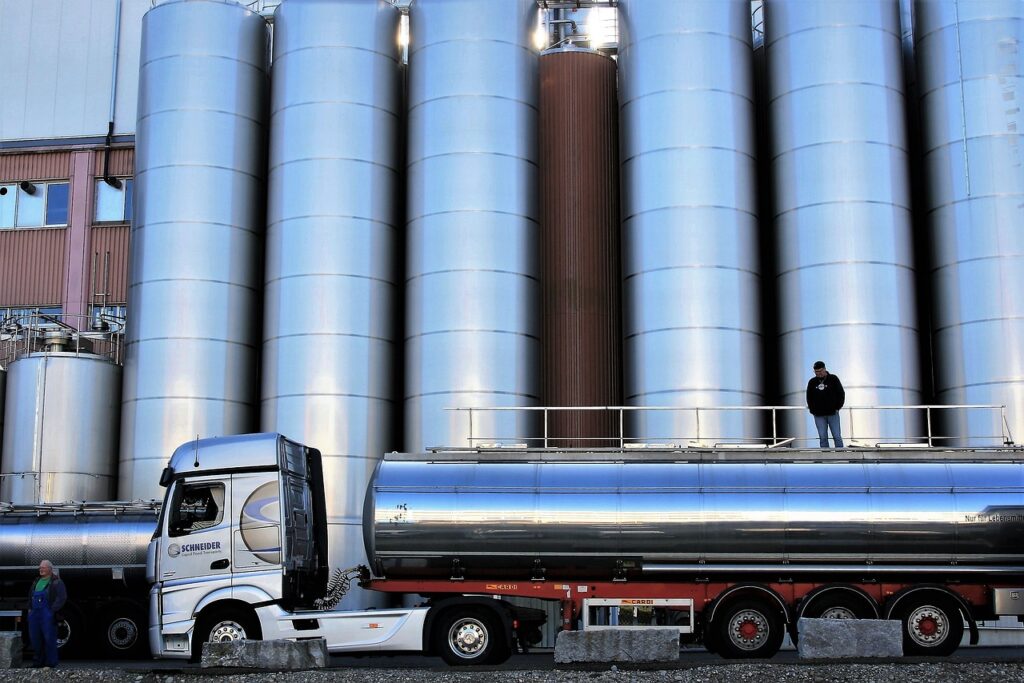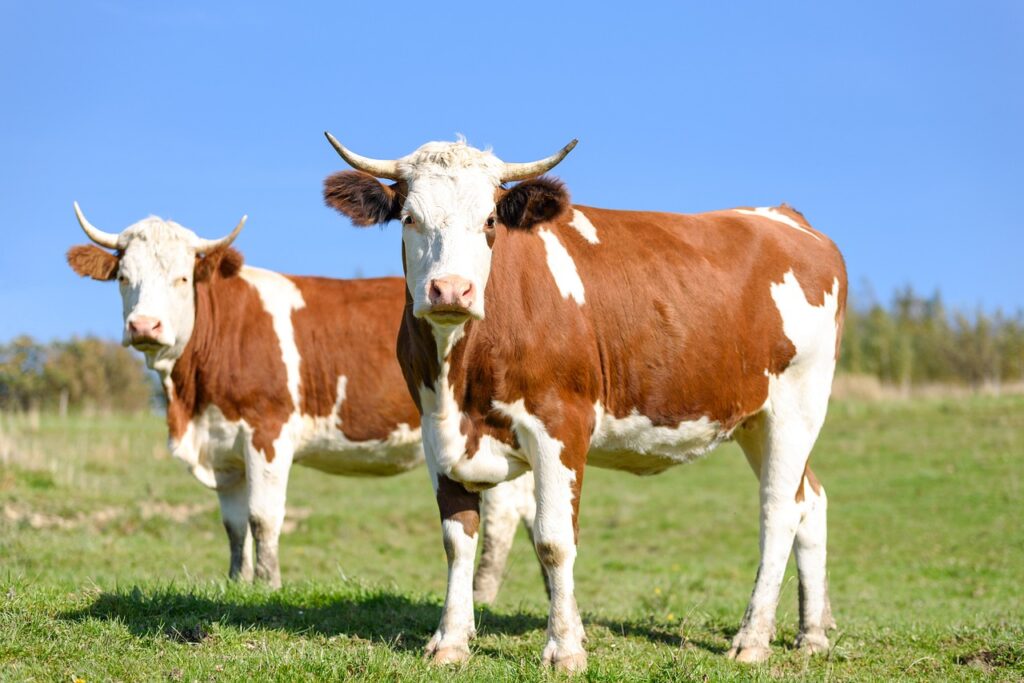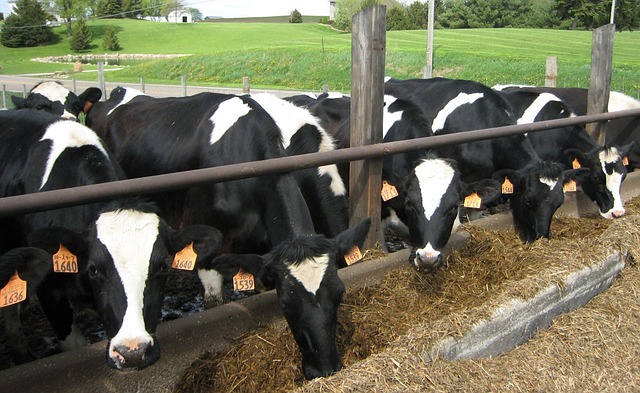Nabard Dairy Farming Yojana 2024
NABARD scheme Nabard Dairy Farming Yojana 2024 has been organized by the Central Government to provide employment opportunities to the villagers of the country. Under this scheme, the government will provide loans at low interest rates to the people of the country’s villages for arranging dairy farming. Under this scheme, loan will be provided by the bank and the animal husbandry department will set up a modern dairy. Complete information related to NABARD dairy farming is given in this post.

NABARD Dairy Farming 2024 Yojana Step-by-Step
First Scheme – To set up a small dairy unit for indigenous cows of breeds like Red Sindhi, Sahiwal, Rathi, Gir, etc. in rural areas. In this, a common unit will be constructed for hybrid cows or 10-milch animals like buffaloes.
Investment – A minimum of ₹5,00,000/- will be required to set up this dairy, which ranges from a minimum of 2 animals to a maximum of 10 animals.
Subsidy – Under this scheme, a subsidy of 25% will be provided on 10 animal dairy. Additionally, there is a provision of 33.33% in the subsidy amount for SC/ST farmers. The maximum capital subsidy allowed is ₹1.25 lakh, which is ₹1.67 lakh for SC/ST farmers. The subsidy will also be available for the second animal unit, amounting to ₹25,000/-, and ₹33,300/- for SC/ST farmers.

Second plan – For calf rearing, purchase 20 calves from the above-mentioned breeds.
Investment – Under this scheme, you will have to invest ₹80 lakh to raise at least 20 calves.
Subsidy – Subsidy up to 25% will be provided to units up to 20 heifers, which can amount to ₹ 1,25,000/-. SC/ST category people will get capital subsidy up to ₹1,60,000/-. Along with this, they can also get subsidies of up to 33.33%. A maximum subsidy of ₹ 30,000/- will be available when the work of rearing 5 calves is started, whereas for SC/ST people this subsidy can be up to ₹ 40,000/-.
Third plan – To prepare vermicompost and manure, which will not be combined with milk animals.
Investment – The investment required here can be up to twenty thousand rupees.
Subsidy – Under this scheme, a subsidy of up to 25% will be provided on investment, which a person can get on an investment of Rs 4.50 lakh. A subsidy of 33.33% will be available to SC/ST applicants on capital up to ₹6 lakh.

Fourth Plan – Purchase of milk testers/milk dispensers and installation of refrigerators to keep milk cool.
Investment – For this, the person has to invest up to Rs 18 lakh.
Subsidy – Up to 25% subsidy will be available on investment of Rs 4.50 lakh. A subsidy of 33.33% will be available to SC/ST applicants on capital up to ₹6 lakh.
Purchase of milk testers/milk dispensers and installation of refrigerators to keep milk cool.
Investment – For this, the person has to invest up to Rs 18 lakh.
Subsidy – Up to 25% subsidy will be available on investment of Rs 4.50 lakh. A subsidy of 33.33% will be available to SC/ST applicants on capital up to ₹6 lakh.
Fifth Plan – To procure dairy processing equipment, which will help in producing indigenous milk products.
Investment – For this project, a minimum investment of ₹12 lakh will be required.
Subsidy – The individual will get a subsidy under a loan against capital up to ₹3,00,000/- on which they will get a subsidy of 25%. SC/ST caste people will get a subsidy of 33.33% on capital up to ₹4,00,000/-.

Sixth Plan – To establish dairy product transportation facilities and cold chain.
Investment – To start this scheme, people will need a minimum of ₹24 lakh.
Subsidy – On investment in the project, the government will provide a loan of up to ₹ 7,50,000/-, on which a subsidy of 25% will be available. People belonging to the SC/ST caste will get loans up to ₹10 lakh, on which they will get a subsidy of 33.33%.
Seventh Plan – Cold storage facility for milk and milk products.
Investment – Under this scheme, people will have to invest at least ₹30 lakh.
Subsidy – On setting up a hospital, any person will be provided 25% of their total expenses by the government. In the case of a mobile or stationary hospital, the amount of subsidy can be up to ₹45,000/- and ₹60,000/-. SC/ST caste applicants will also be provided 33.33% of the total expenditure by the government. Depending on the status of the hospital, a subsidy of up to ₹80,000/- may be available to them.
Eighth Plan – Establishment of a Private Veterinary Clinic
Investment – An investment of Rs 2.40 lakh will be required for a mobile clinic and Rs 1.80 lakh for a stationary clinic.
Subsidy – 25% of the expenditure will be provided by the government, including a subsidy of 33.33% for ultra-protected castes and tribes of the society. Subsidy up to ₹45,000/- and ₹60,000/- may be available, on the total expenditure of the applicant.
Eligibility for the NABARD Scheme
Farmers, individual entrepreneurs, non-narrow organizations, companies, unorganized and organized sector groups, etc. can take advantage of this scheme.
A person can avail the benefits of this scheme only once.
Under this scheme, more than one member in the same family can get assistance but for this they will have to establish separate units at different places with different infrastructure. Along with this, the distance between the two projects should be at least 5 meters.
The beneficiary can avail of assistance from all the components but only once.
How to apply for the NABARD scheme
First of all, go to the Official Website of the National Bank for Agriculture and Rural Development NABARD.
Now click on the option of Information Center on the home page.
Now a new page will appear in front of you.
Now you have to download the PDF file of the form based on your respective scheme.
Now you have to fill out this application form and attach the necessary documents along with it.
Now you have to submit this application form to the nearest bank concerned.
For more information related to this form, you can also get it from the NABARD office or bank of the district.
- How to Plant Bougainvillea by Cuttings: A Step-by-Step Guide
- Rose Care Tips
- How to Care of Money Plant: A Complete Guide
- How to Grow Poinsettia at Home: A Complete Guide
- Agriculture Budget 2025
- Agriculture
- Business
- Education
- Floriculture
- Horticulture
- Jobs
- Latest News
- Success Story
- Technology
- Vegetables

